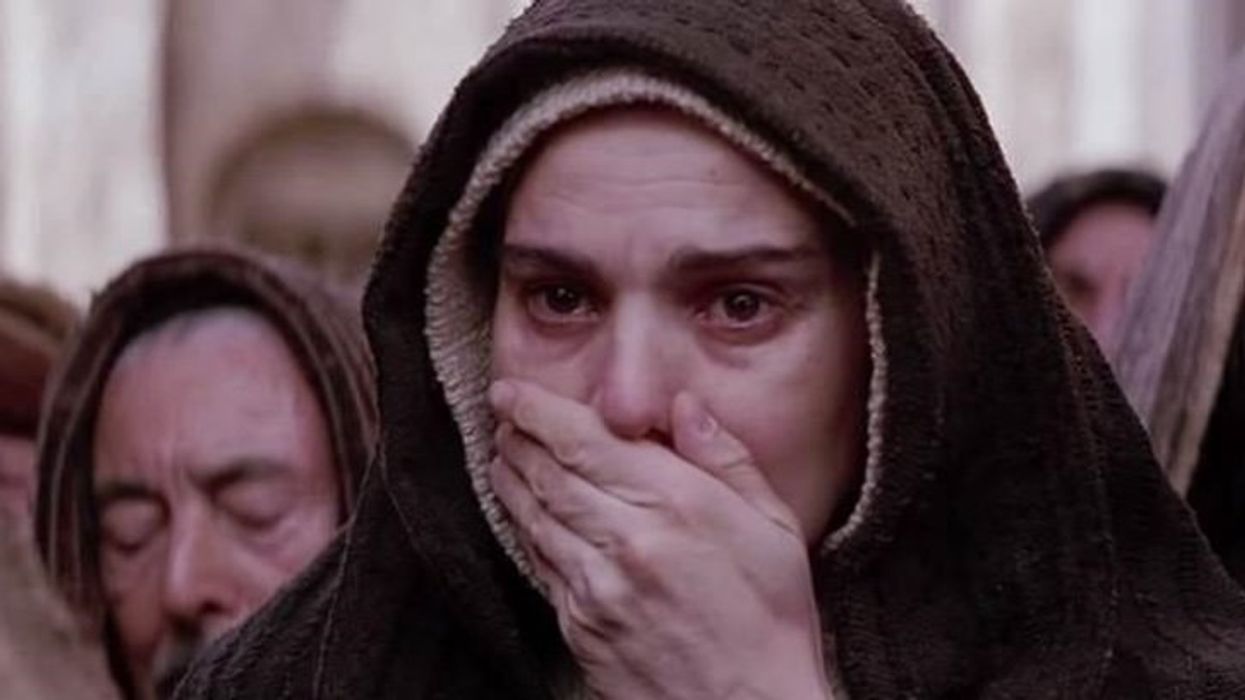
Icon
Good Friday reflections on the Passion and a mother's agonizing witness.
It’s Good Friday, which means that tonight I’m probably going to lose the last ten pounds of baby weight in tears while watching "The Passion of the Christ."
When the movie originally came out, critics panned director Mel Gibson for “excessive gore” and “sadism.” I hear similar critiques today. It reminds me of those from people who favor, say, a diamond cross necklace over a crucifix or who reject the imagery as inappropriate for a church pulpit. It’s unnecessarily gory.
If we aren’t willing to truthfully contemplate the brutality of Christ’s suffering, how can we expect to “take up our cross and follow Him” as he commands us? Discomfort with brutality is, of course, natural. But the brutality of Christ crucified is inseparable from the truth of salvation.
News flash: Crucifixion is one of the most brutal ways to die. Christ was flayed by Roman soldiers. He was calumniated by the Sanhedrin. The soldiers did press the crown of thorns into his head mockingly. His body was beaten, broken, and bloody. And here’s the kicker: Though the Jews and the Romans and their instruments of death were the proximate cause of his torture, our sin remains the primary cause of his torture.
What do we achieve by averting our eyes from the hurt we cause our Savior through sin, either by our fleshly discomfort with blood or our spiritual discomfort with guilt? Why would we ever attempt to minimize His ultimate act of self-sacrificial charity, His confrontation of the wages of our sin on our behalf?
“For God so loved the world, that he gave his only begotten Son, that whosoever believeth in him should not perish, but have everlasting life.” “Greater love hath no man than this, that a man lay down his life for his friends.” To meditate on Christ’s love is to meditate on His sacrifice.
Among Gibson’s most genius choices in the film is his deliberate inclusion of scenes involving Christ’s mother. One in particular stands out: As Christ first falls while carrying his cross to Golgotha, Mary sees him. We are given a flashback in which he as a child stumbles on a stone path. Mary runs to him, arms outstretched, her presence his succor. Flash forward, and she runs again, arms outstretched, as Christ chokes on his own blood, crushed under the weight of the cross. I imagine the profound grief and gratitude commingling in both of their hearts for just a moment of one another’s presence.
The crucifix takes on new meaning from the perspective of the woman standing beneath it, looking up at him unblinkingly, soaked in his blood, blood of her blood. In so many ways, his wounds are hers, too.
I imagine her human, maternal nature, her desire to bring him comfort, to take her baby’s pain away, to switch places, something, anything — all brushing up against the hope of the greater good to come. The cross is the fulfillment of his promise and of her fiat: her ultimate confidence in God’s promise, unchanged by the bitter fact of Simeon’s prophecy. She suffers alongside her son, as only a mother could, in total surrender. His words in the Garden of Gethsemane and hers at the Annunciation echo one another: Thy will be done.
Catholic tradition holds that we take Christ seriously by honoring who he honors. I love Gibson’s "Passion" for so many reasons, but primarily because he takes Christ seriously by paying serious attention to his mother — and by refusing to shy away from the brutality he endured.
This sincerity, the act of taking historical subjects seriously, is accomplished by placing oneself in the shoes of those subjects without pretense, judgment, or ideological imposition. Dr. Rachel Fulton Brown, my guest in this episode of "Girlboss, Interrupted," in her latest book, "Mary and the Art of Prayer: The Hours of the Virgin in Medieval Christian Life and Thought," has accomplished something so unique and interesting by doing just this. This history of Marian devotion begins with a call for readers to take their subjects, medieval Christians, seriously, by praying the psalms as they did throughout the day.
I won’t spoil any more surprises. This episode was so fun to record. Please enjoy, and as ever, send messages, leave comments, share with friends, and drop me a five-star review on Spotify and Apple podcasts.
I hope y’all have a holy holy week. Christ is coming.
- YouTubeyoutu.be